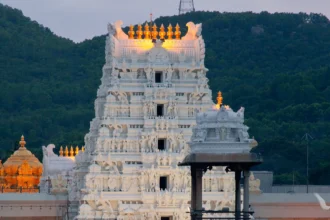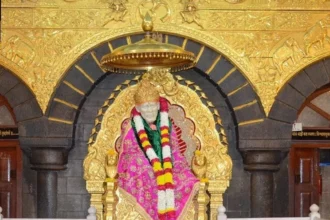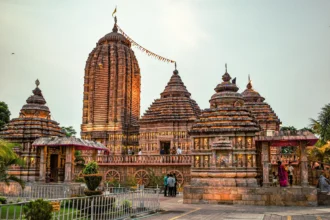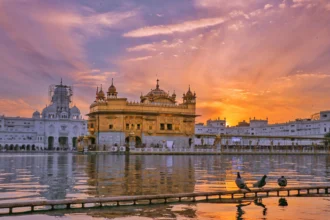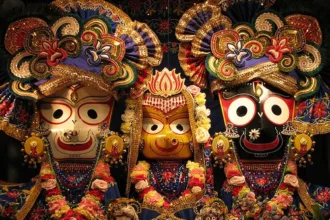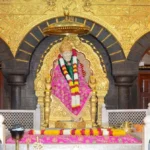In the bustling heart of Mumbai, where skyscrapers rise like dreams and local trains pulse like veins, stands a temple that doesn’t just draw crowds—it pulls hearts. The Shree Siddhivinayak Ganapati Temple in Prabhadevi is more than just a sacred site. It’s a place where tears have dried, hopes have taken flight, and miracles have walked quietly among common people.
This isn’t just about a stone idol. It’s about faith that breathes, devotion that moves mountains, and a God who’s small in size but vast in grace—Lord Ganesha, the elephant-headed remover of obstacles, lovingly called Siddhivinayak: “The Giver of Success.”
The Humble Origins: A Temple Born From Devotion
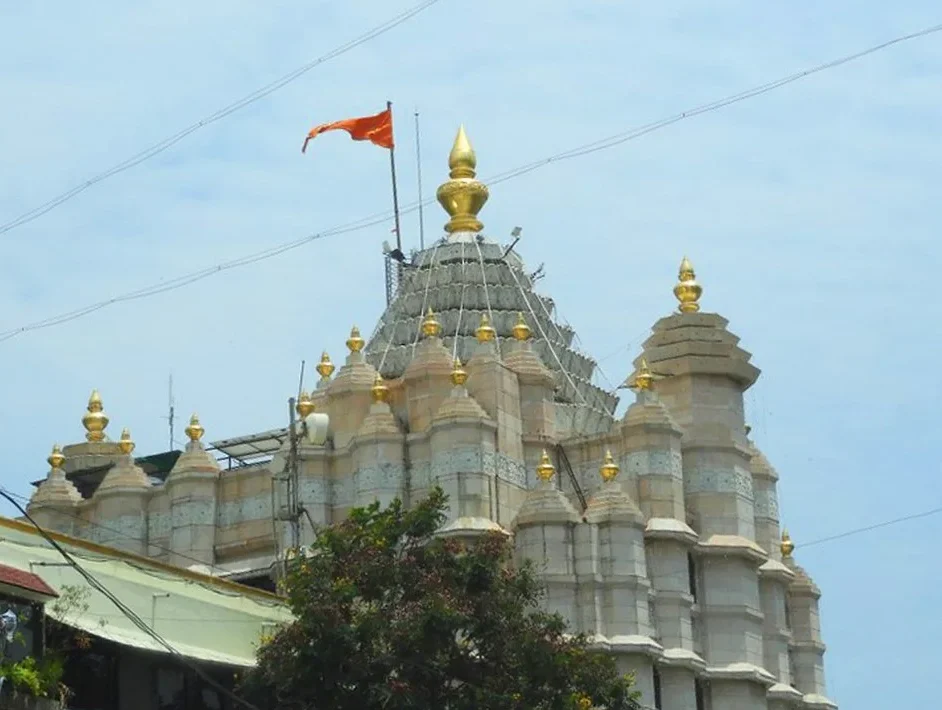
The temple wasn’t always grand, glittering, and guarded by queues. In fact, when it was first built in 1801, it was nothing more than a 3.6-meter square brick structure with a modest dome and a wooden hall. The man behind this sacred beginning was a contractor named Laxman Vithu Patil, with the financial and spiritual support of a wealthy woman named Deubai Patil.
Here’s the beautiful part—Deubai was childless, and she prayed for other women who were like her, longing for children. She built the temple not to ask for a child of her own, but so that other women’s prayers might be heard. That selfless act laid the spiritual foundation of Siddhivinayak—a place where the wishes of the heart are whispered and often answered.
The Deity Who Listens: Ganesha Like You’ve Never Seen
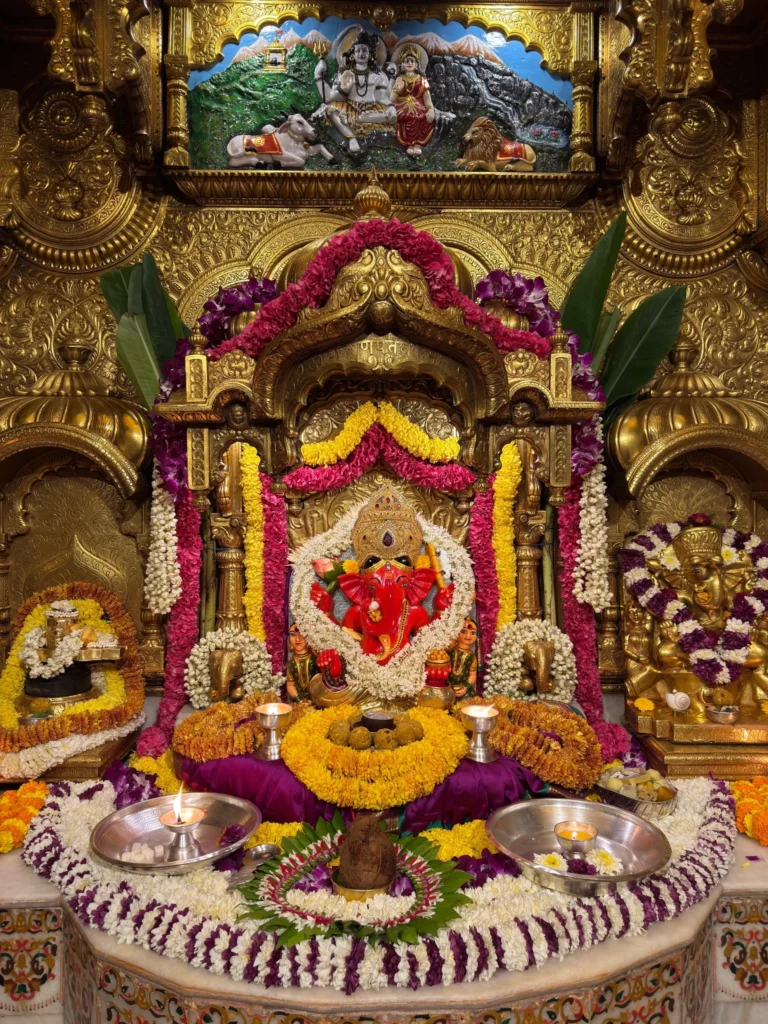
The idol of Shree Siddhivinayak is not just any Ganesha murti. Carved out of a single black stone, the idol is just 2.5 feet tall, yet radiates a presence that fills the room. What’s rare is that the trunk of this Ganesha curves to the right—an unusual form known as “Siddhi-Vinayak”, symbolizing fulfillment of wishes and rare power.
Flanking Ganesha on both sides are His two divine consorts, Riddhi (prosperity) and Siddhi (spiritual power). Together, they form a divine trio that blesses devotees with both material and inner success.
But that’s not all.
On His forehead is etched an image of a third eye, like Lord Shiva’s—a sign that this Ganesha is not just the remover of obstacles, but also the watcher of time, energy, and karma.
The Temple’s Architecture: Tradition Meets Time
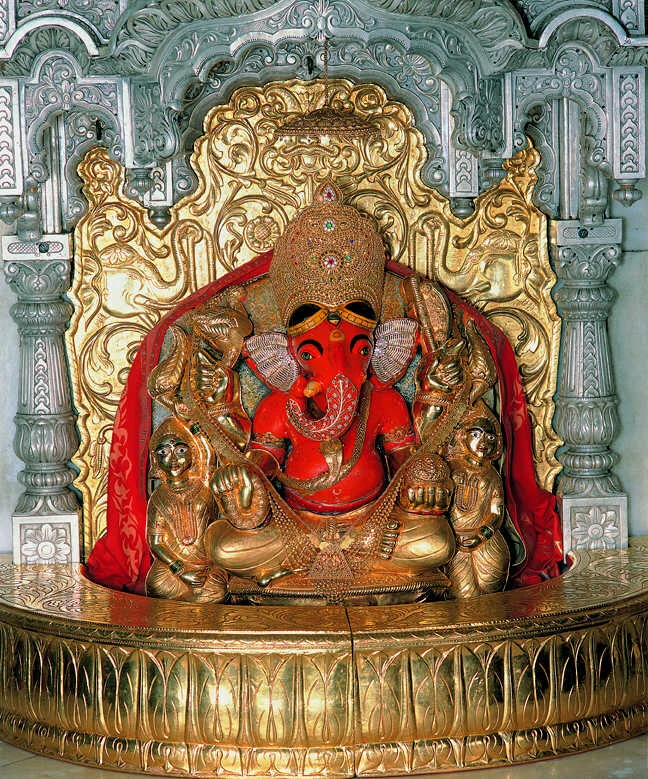
What started as a tiny shrine has now grown into an iconic six-storied temple complex, adorned with golden domes and intricate carvings. The sanctum sanctorum is crowned by a gold-plated dome, and every Tuesday—the most auspicious day for Lord Ganesha—thousands gather for a glimpse of the idol shining under gentle light, the air thick with the scent of marigolds and modaks.
The outer walls are engraved with Ashtavinayak (eight forms of Ganesha), connecting the temple to the sacred pilgrimage route in Maharashtra. Despite its expansion, the temple has retained a deep intimacy—a sense of stepping into sacred silence amid urban noise.
Stories That Stir the Soul
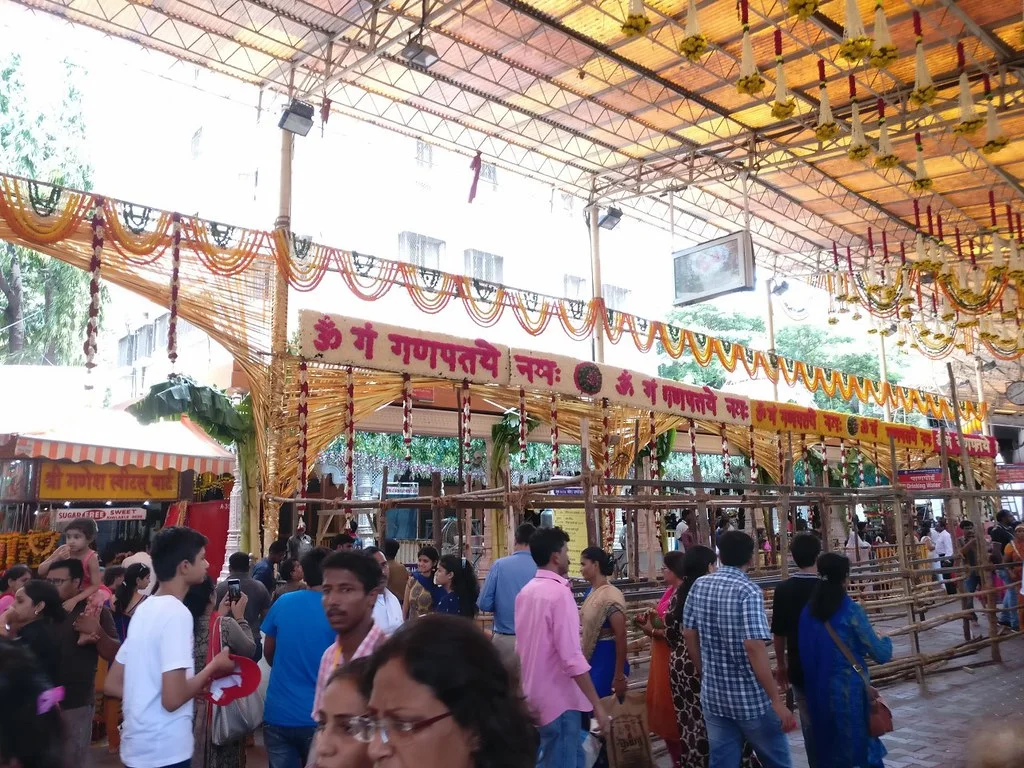
The Coconut That Reached the Lord
In the early days, when there was no structure around the sanctum, a coconut seller used to offer the first coconut of the day to Siddhivinayak. One day, she was running late and tossed the coconut toward the temple, hoping her prayer would still reach. Miraculously, the coconut landed at the deity’s feet—without a scratch on it. Since then, devotees have believed that even distant, rushed prayers are received by the Lord.
The Devotee Who Found His Legs
There’s an old tale of a disabled beggar who sat at the temple steps, unable to walk. He had no money to offer but chanted “Ganapati Bappa Morya” every day. One stormy evening, when the temple was nearly empty, he heard a voice inside him tell him to stand. Shaking, crying, and unsure—he stood. And then walked. The temple priest saw him and wept. The story spread like fire—and the beggar never returned, as if he had walked into grace itself.
Celebrities Stories At Siddhivinayak
Siddhivinayak isn’t just loved by the masses—it’s revered by the mighty. Bollywood stars, cricketers, politicians, and even international dignitaries are known to visit before major life events.
It’s said that Amitabh Bachchan walked barefoot to the temple during a family crisis. Sachin Tendulkar once offered his cricket bat after a landmark win. Aishwarya Rai and Abhishek Bachchan visited before their wedding. But what’s touching is that celebrity or not, everyone stands in the same line, proving once again that faith is the ultimate equalizer.
Lesser-Known Facts That Will Surprise You
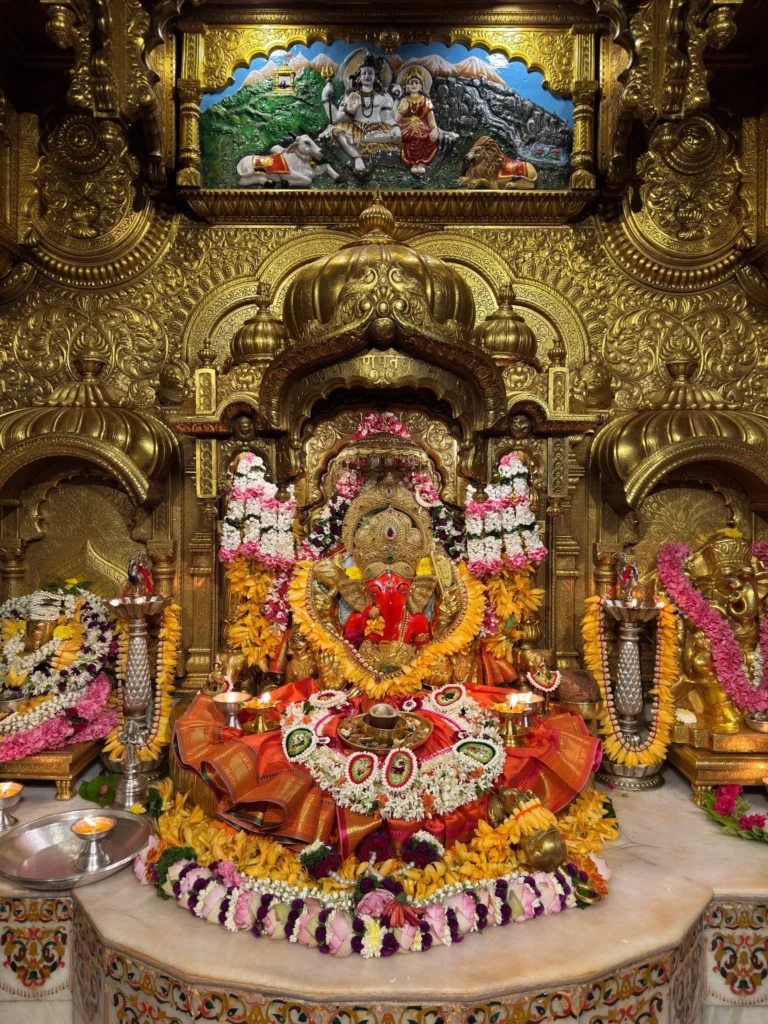
1. A Tree Older Than the Temple
Behind the sanctum lies a sacred banyan tree that is believed to be older than the temple itself. Many devotees tie red and yellow threads around it to make wishes—especially for childbirth.
2. A Secret Tunnel
Legends say there’s an underground tunnel beneath the temple used during colonial times. Though closed now, elders in Prabhadevi whisper about strange lights and sounds from the tunnel on stormy nights.
3. The Temple Was Once Attacked
During the 1993 Mumbai bomb blasts, there were rumors of Siddhivinayak being a target. Yet, miraculously, the temple remained untouched. Devotees say it’s because Bappa protects His home.
4. Eco-Friendly Practices
The temple management uses solar panels, recycles offerings, and runs charity hospitals and educational programs. Faith here doesn’t stop at prayer—it flows into service.
5. One of the Wealthiest Temples in India
Siddhivinayak receives donations worth crores every year, making it one of the richest temples in India. But much of it is used for charitable trusts, especially helping underprivileged children and women.
Why Siddhivinayak Is More Than a Temple
To the outside world, it may seem like just another shrine. But for Mumbaikars—and millions across the globe—it’s home in the heart of chaos. A place where one can cry without shame, wish without fear, and believe without reason.
People come for jobs, for marriages, for healing, for children, for exams, for gratitude, or just to sit for a moment and feel like they’re being seen.
And more often than not—they walk out lighter, with something changed inside.
The Spiritual Heartbeat of Mumbai
In a city that never sleeps, Siddhivinayak offers a pause that feels eternal. The chanting of mantras, the sight of flickering diyas, and the fragrance of modak offerings blend into a spiritual rhythm that thousands follow every day.
The power of Siddhivinayak lies not in miracles alone, but in the simple, unconditional love of Ganesha—the God who listens without judgment, acts without delay, and stays without conditions.
Temple Timings, Rituals & Practical Details
Siddhivinayak Temple Timings:
The temple opens every day, including public holidays.
Here’s the daily schedule for darshan and rituals:
| Day | Opening Time | Closing Time | Notes |
|---|---|---|---|
| Monday–Sunday | 5:30 AM | 9:50 PM | Regular Darshan timings |
| Tuesdays | 3:15 AM | Midnight | Most crowded & auspicious day |
| Aarti Timings | |||
| Kakad Aarti | 5:30 AM | 6:00 AM | Morning prayer with soft chanting |
| Shree Darshan | 6:00 AM | 12:15 PM | General darshan |
| Naivedhya Aarti | 12:15 PM | 12:30 PM | Food offering to Lord Ganesha |
| Madhyana Aarti | 12:30 PM | 7:20 PM | Midday prayer |
| Shej Aarti | 9:50 PM | 10:00 PM | Night farewell prayer |
Major Rituals at the Temple:
- Modak Offering (Naivedhya):
Offer Ganesha’s favorite sweet—modak (especially coconut jaggery steamed ones). - Oil Lamps (Nandadeep Seva):
Lighting a lamp here is considered auspicious, symbolizing light over darkness. - Coconut Breaking (Shreefal):
Symbolic of breaking the ego. Many devotees break a coconut before entering the temple. - Naam Jap:
Recite “Om Gan Ganapataye Namah” or chant “Siddhivinayak Maharaj ki Jai” for blessings.
Festivals Celebrated at Siddhivinayak Temple:
- Ganesh Chaturthi (August/September):
The biggest and most vibrant celebration. The temple sees lakhs of devotees, and darshan continues for extended hours with grand aartis and flower decorations. - Maghi Ganesh Jayanti (January/February):
Celebrates Lord Ganesha’s birth. Special rituals, storytelling sessions, and bhajans are held. - Angarika Chaturthi (when Tuesday coincides with Sankashti):
Considered highly auspicious. The temple is open overnight for darshan. - Navratri & Diwali:
Though primarily dedicated to Ganesha, the temple lights up beautifully during these festivals.
How to Reach Siddhivinayak Temple:
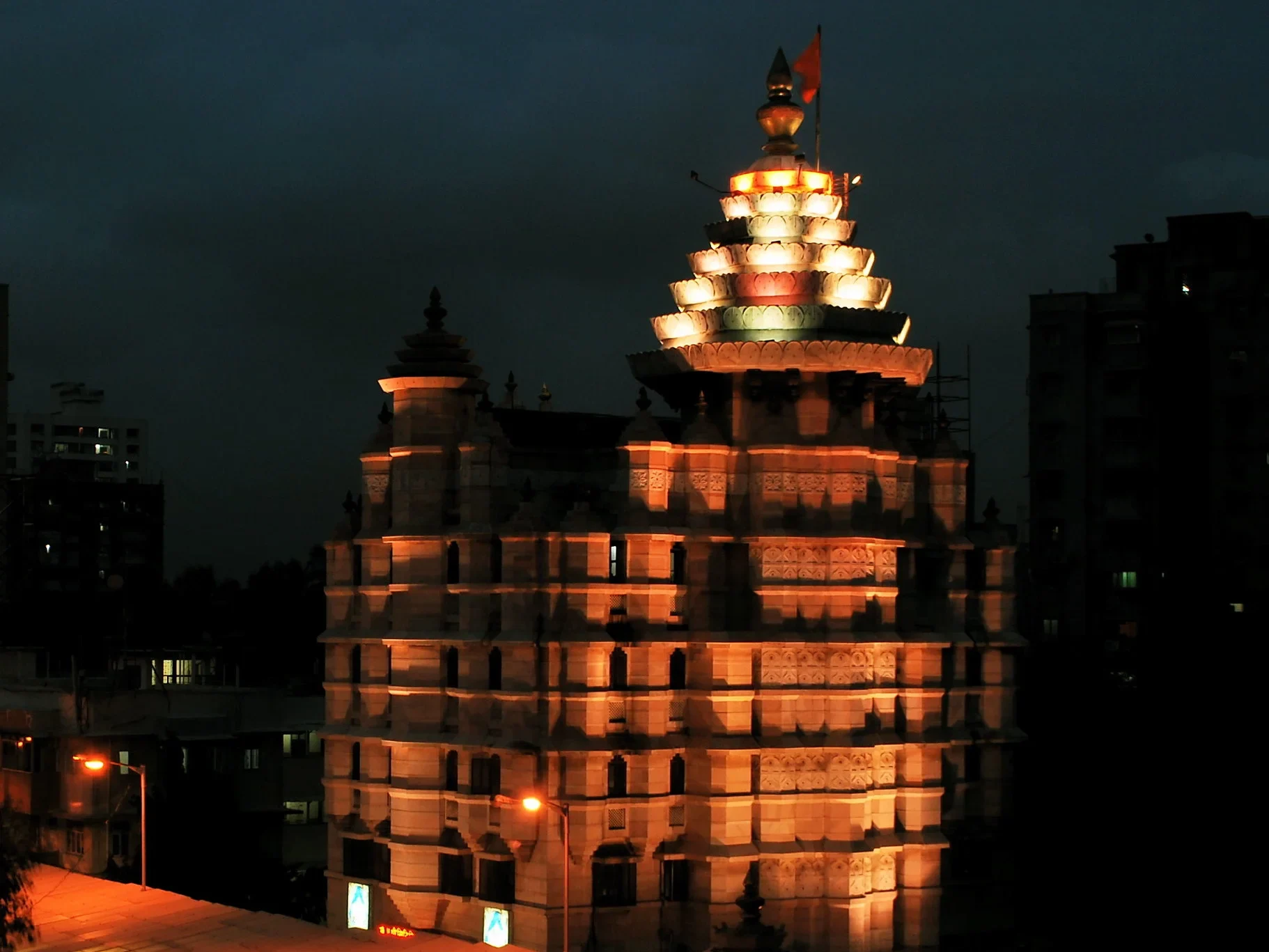
Address:
S.K. Bole Marg, Prabhadevi, Mumbai, Maharashtra – 400028
By Train:
Nearest Railway Stations:
- Dadar (Western, Central Line) – Just 10 mins by taxi or 20 mins walk.
- Elphinstone Road (Western) – Close by.
- Parel (Central) – Also nearby.
By Bus:
Several BEST buses stop near Siddhivinayak Mandir Bus Stop, including 63, 80, 84, 357.
By Auto/Taxi/Rickshaw:
Easily accessible via auto rickshaws, Kaali-Peeli taxis, or app-based cabs.
By Air:
From Mumbai International Airport (T2), it takes about 30–40 minutes by road depending on traffic.
Pro Tips for Visitors
Best Time to Visit:
Weekdays in the early morning (before 7:30 AM) for peaceful darshan.
Avoid Tuesdays after 9 AM unless you’re okay with a long queue.
Online Darshan:
The temple provides live darshan and online seva bookings via their official website.
Dress Modestly:
It’s a sacred space. Ethnic or modest clothing is appreciated.
Footwear:
Footwear must be removed outside. Designated counters are available.
Security Check:
Bags, large purses, and metal items are checked. Carry light.
Photography:
Not allowed inside the sanctum. You can take photos outside the main temple.
Final Words: When You Visit
Whether you go barefoot from Dadar, join the Tuesday morning line at 3 AM, or just close your eyes and whisper His name—Shree Siddhivinayak hears you. You don’t need the perfect prayer or the right ritual. All you need is a heart that feels, and faith that holds on.
Because in this temple, prayers don’t echo—they’re received.



